Reconstruction 10.4 (2010)
Return to Contents»
Urban Passions / Barie Fez-Barringten
Abstract: This autobiographical narrative, which spans from Fez-Barringten’s childhood in the Bronx until the present, uses impressionistic shifts and the author’s own drawings to explore what it means to have a passion for cities and social space, thus simulating the effects of this passion on the level of form.
Keywords: autobiography, architecture, space and place
<1> Even before moving to the Bronx’s Hunts Point as a little boy, less than four years old, I’d explore the cellars where coal was stored and especially the underground grease pits below the street parking garage accessible from our Home Street apartment building. It was in this apartment I heard Roosevelt's "Day of Infamy" broadcast and nightly the roar of overhead planes policed the Bronx skies. Beams of lights searched the skies and illuminated our planes and I'd go out to the stairs before our apartment and greet the air raid warden, he and I got to be buddies and he let me try on his helmet. A year or two later, in my pajamas, and long before dawn I'd open the door to our two-family Faille Street house on the last street before industrial Hunts Point. I'd put my bare foot onto the red brick steps to descend to the glittering cement side walk. This was my first urban act when I touched the city and I could feel it under my feet.
<2> One morning I'd go into one street and the next I would go the other direction circling the block and seeing every detail that could be seen by the lamp lights on our dimly lit street. In the day, with my few and chosen older-best-friends Billy and Ralph I would explore the factories, abandoned huts, Drake Park graveyard, shacks inside sawdust piles, and those now warehoused WW2 searchlights, tanks and Jeeps. One day we found a barrel and I ate a hot pickle which seemed to burn within my whole body, I felt like I was going to die, and ran to every factory till one kind worker gave me some sugar to relieve my suffering.
<3> Five years later, we moved to a tenement in the Morrisania Fort Apache neighborhood where I continued my practice of exploring the urban streets to discover sewers, cellars, iron guardrails, and the alleys behind buildings. My explorations were solo missions and since our block was very long there were many building stoops, cellar stairs, tunnels, alleys, and secret storage rooms I could enter and explore, when, that was not enough I'd explore the roof tops and fire escapes and chimneys; all that without crossing the street or leaving my block. These were the earliest manifestations of my urban passion.
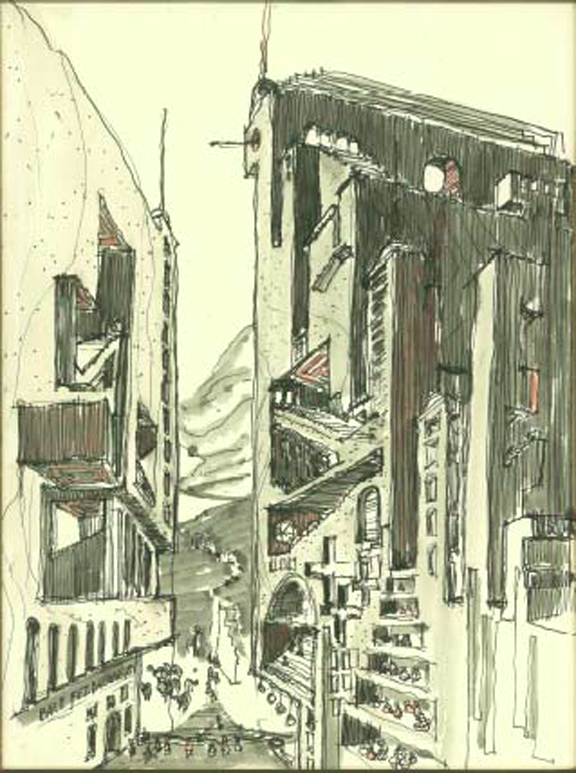 |
<4> Music and urban ethnic diversity was supplied by my Mediterranean grandmother from Rhodes as she taught me how to dance to her Greek music played on her manual wind-up Victrola. I also had Italian, black, Puerto Rican, and Jewish best friends from whom I learned many colloquial, foods and customs so that when we later lived in Puerto Rico, Saudi Arabia, European, and Asian cities, I was right at home.
<5> In the same way, before I was ten, when I stuttered and stammered; and after my father had bought me a phonograph, I bought records with my allowance money which I'd play and then I would write and memorize the words of all the songs. It was the day of radio, so I likewise memorized all the soapbox, serial jingles and program introduction' classical musical themes and words. It was in this way that I learned to read and write, and soon I was able to overcome my stuttering by reciting what I had memorized. I learned to first picture my words and then read them aloud when I sang or spoke. I also could not tie my shoelaces until an older blind girl taught me.
<6> I knew I was emotionally compelled to make these urban explorations because no human being was whispering in my ear. All of these explorations were coupled with my building miniature rooms in the sun parlor of our Hunts Point house. I built them out of cardboard boxes, orange crates, and egg boxes from the corner grocery.
<7> The roof was made out of rope and spare blankets my Mom permitted me to use. Later, in the tenement on Simpson Street, I’d build miniature stages and scenery out of "Marcel" tissue boxes and exhibit them on our oriental curio cabinet, a cabinet, which we inherited from my grandmother. This was all my idea of playing and exploring.
<8> As I matured, I found that I had a plethora of visual and graphic vocabulary, which now needed explanations, and I did not stop asking adults at school or on the streets about each and every detail. So were the seeds planted of my passion for the city and its bits and pieces?
<9> About 45 years later, I shared this story with my Turkish friend, a professor and colleague at King Faisal University in Saudi Arabia, after which he explained how these experiences, made me an extraordinary architect. He said that I was "called" to be an urban architect, which made me very passionate about my profession which was becoming very real. He said this was very rare and lucky for me for my whole life. Indeed, he was correct, because as I matured it seems that the only jobs and hobbies I had revolved around urban buildings, streets, interiors, furniture and decoration.
<10> At twelve, I became a store helper, boy salesman, and later made cornices and hung drapes in thousands of apartments in hundreds of neighborhoods in the Bronx, Brooklyn and the emerging suburbs of both Long Island and Westchester County. I even hung drapes in Manhattan’s richest luxury apartments such as the multi-story apartments on Fifth Ave and the owner of the new credit card company called the "Diners Club" on Central Park South. Even in this, I was passionate and got paid top dollar at one dollar per foot, with what I earned from this job I was able to pay my tuition and fare to travel Europe and other American cities.
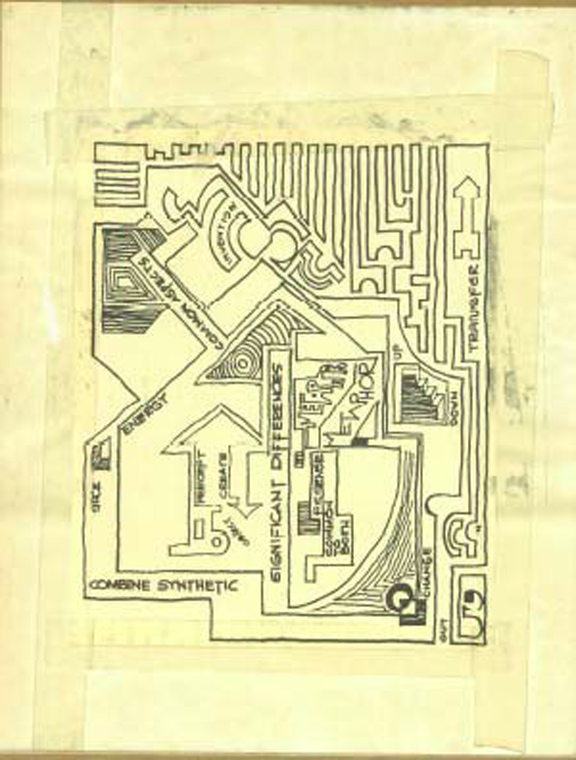 |
<11> While I attended college, I worked full time during one summer as a Good Humor man and also for my father, who owned a limonene rental business, I drove his limousine where I again was able to memorize the many streets, traffic patterns and neighborhoods of the Bronx, Manhattan, and Brooklyn. Other urban jobs included delivering newspapers into tenement buildings.
<12> I still was asking questions and getting few answers until I became a student at New York School of Interior Design. My grades went from high schools "just barely passing" to straight "A’s" in all subjects. My vocabulary was expanding and my hungry heart could not fully describe what I was seeing and doing.
<13> I over-achieved on every assignment and was going to every museum, and reading every book on every fabric, porcelain, carpet, furniture and doorknob.
<14> I knew then I needed more to satisfy my passion so I requested the name of the best school with the smartest and most knowledgeable teachers, ones who would really know the answers to my hundreds of questions.
<15> One teacher told me that "Pratt" was the best. When I applied, I was scoffed at because of my dismal public and high school grades. They sent me to a local junior college where some special teacher came up with a solution and appealed to the Pratt registrar, who agreed that if I could get great grades at Columbia’s School of General Studies they would admit me, surely, they thought that was the end of me. Well, not only did I get great grades but also I savored my courses in sociology, behavioral psychology, and especially Art History.
<16> The art history class culminated in a lecture commemorating the Christmas holidays showing stunning slides of the Vatican and St. Peter’s. Ten years later when the train pulled into the Rome train station I stood gazing out of the window at the front of the car as I had done for years with my uncle David in New York subways, only this time to see the Rome station getting larger and larger. When the train stopped and chills over my body subsided and after stashing my suitcase in a locker, (I) made my way to St Peters. My every fantasy came true as I saw the over-scaled marble floors, gigantic Baldacchino, great Bernini statues, and Michael Angelo sculptures. It is from this experience and my fascination with Giovanni Battista Piranesi’s surreal romantic 16 prints of "Imaginary Prisons" that I urged myself)to draw pen and inks of the variations in scale and contexts for my "midnight in the oasis" fantasy collection.
<17> I also attended New York City’s Hunter College for Physics, so all of my studies also took me to the very best urban schools where I could additionally experience more urban culture. Before I was to leave New York City in 1973 at the age of thirty six, I had been immersed in urban economics, politics, and government; I was street and office savvy and knew the ins and outs of education and institutions. I definitely had an urban attitude and multiple urban identities evolved from the street, school, culture, institutions, business and professional practice.
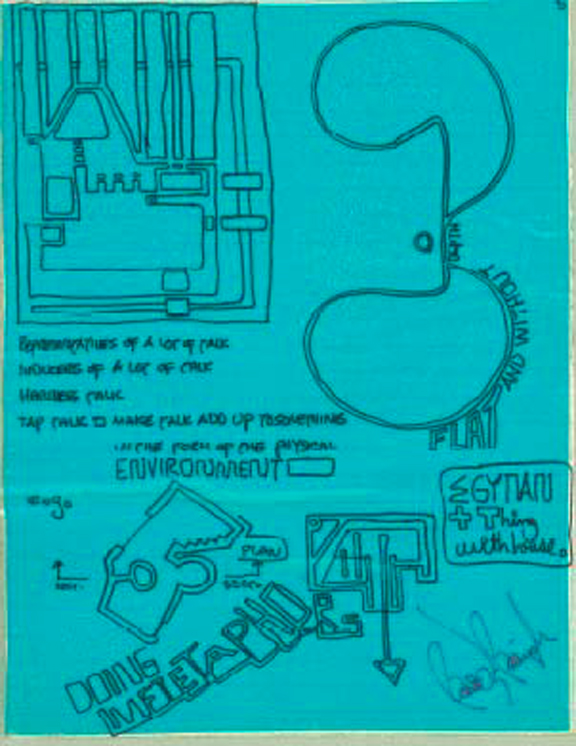 |
<18> Through Pratt, my urban passion compelled me to befriend my Contemporary Theories professor, Gerald Popiel, who had been a writer in England for the Voice of America and was a member of the Polish intelligentsia. He mentored me in urbanity, urbaneness, and the significance of cities, civilization, and architecture. At the same time, I read Ayn Rand, and most of the great books under the guide of Mr. Fjelde, my great books teacher. I was blessed to have the Hollywood actor John McGiver as my high school English teacher who taught me to read and appreciate Shakespeare and off-Broadway theater. I myself acted in the Pratt playshop and romanced a gifted artist, poet, and intellect named “Barbara Allen”.
<19> With the encouragement of New York’s most famous radio disc jockey, Ted Brown, and his wife, I became a radio announcer and when they divorced, we had extravagant "la dolce vita" parties and good times in the streets and theaters. She was my first interior design client and I not only hung all the drapes in their former residence but also now furnished her new house. At the opening of the movie, "Never on Sunday," she and her actor friends and I sang and danced in the isles.
<20> During the height of the sixties my Cousin Louis Abolofia and Christina’s close friend, Max Waldman, ushered us through the most artistic, fantastic theatre, and happenings in Manhattan, Max's work finally wound up in the New York’s Museum of Modern Art, (MOMA) exhibiting his photographs of actors, Opera singers, and ballet dancers.
<21> At Pratt, I found the school’s radio station and when I later studied architecture at Yale, I worked at night as a broadcaster at a Waterbury radio station. The owner of the station was none other than the chief engineer for the then famous all music station, WPAT, in Paterson, New Jersey. With the encouragement of Dean, and Charles Moore; I created a lecture series called "Architecture the Making of Metaphors," which had many of the period’s most creative urban architects and scholars including Robert Venturi, John Cage, and Christopher Tunnard.
<22> The architectural historian, Vincent Scully was my Yale student- adviser and I got to know New Haven’s Mayor Richard Lee over many personal conversations about this wonderful program of planning and selecting the world’s best architects for many buildings in his city. We also discussed the black riots. All of these people contributed to adding discipline to my urban passion. During this time the extraordinarily talented, former Designs for Business supervisor and now one of my best friends visited. I even invited my former Pratt professor, then screen writer and Chef Editor of Progressive Architecture magazine, and author of many children’s books about architecture, to New Haven to present his ideas of metaphors at my lecture series.
<23> I wasn’t the only member of my family with a passion for urbanism. During this same time, my cousin Owen, who was working as a clerk for Thurgood Marshall went to Watts to mitigate the rioters while other rioters marched right past our Orchard Street window in New Haven. Today, after serving as vice dean at Yale law school and occupying one of its prestigious chairs, Owen’s law text book is widely used in law schools and he advised Eritrea about its constitution.
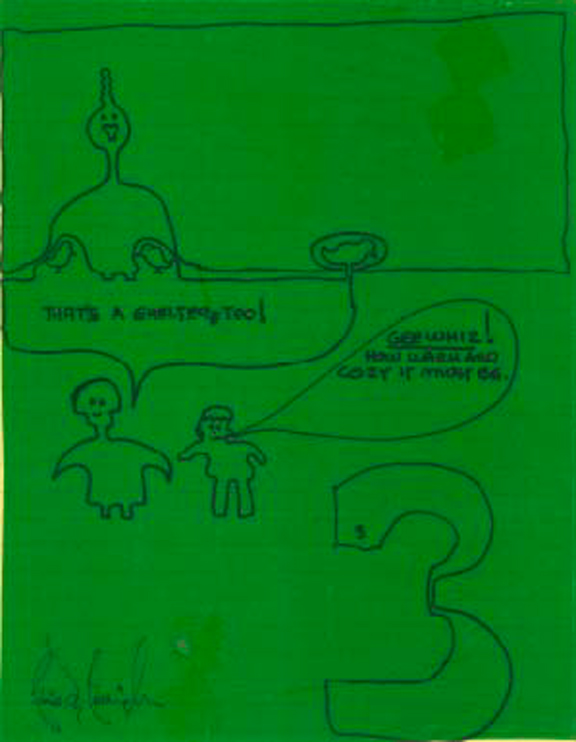 |
<24> We traveled with very short notice. For example, our trip to the western states from College Station was arranged and planned in twenty-four hours; when I heard the temperature forecast would reach 104 degrees and used this as an excuse to go to the mountains of Arizona, Wyoming, Colorado, and New Mexico. But, neither Christina nor I were travelling to be adventurous or part of a class of people. We were caught up in the opportunity to change environments, habitats, venues, and contexts and decided that to do so was healthy and worth while. Such an attitude kept our passport always in order and our minds unglued from our current context, what ever it was in prior years. I had detailed hand-lettered describing each and every city that I visited. I wrote them in carbon copy letters.
<25> One of my father’s clients was so impressed with my efforts she sponsored my writing by giving me several thousand dollars toward the publication of the book.
<26> The book I lettered is filled with descriptions and characterizations of the feeling and ambiance of each city. I was struck by the way the scale, building form, and volumes made the streets and the experience of the city aesthetic, beautiful, and exciting. In this way, my life has been a kind of prototype or model of an urban person. Perhaps I did more than most and what I did exaggerated the diversity of an urban person.
<27> I found that, as each person was unique each place had its own identity and character.
<28> I remember many details of buildings and streets, but I also recall some special events and people, which still linger in my mind. For example, because there were no other available pensions, the Dubrovnik, the city tourist bureau assigned me to a girl’s dormitory for my entire stay. One of its residents told me that because of the care for her and the people, President Tito was like her father.
<29> Additionally, I spent an entire day with a young female gypsy who welcomed me into her family camp. They only visited cites and urban areas but preferred to live in clusters and had no agreements with any one or another nation. Later, in Saudi Arabia, I was to meet Bedouins with similar points of view. In fact, many urbanized Saudis still prefer there own tribes to any allegiance to a city or the kingdom.
<30> Both the gypsy and Bedouin are inherently anti-urban. Yet they both work and live well in dense groups. However when they live in cities, the Saudis surround there house’ with walls while the Bedouins keep their tents separated and shielded with hanging carpets.
<31> I enjoyed many of Italy’s formerly royal and natural cities including the one month I spent in Florence filled with many adventures including the welcome surprise of meeting a former Pratt classmate on the other side of the Ponte Veccio, by the time I left, I felt like I personally knew the Medici family, Machiavelli, and Michelangelo. In Milan, I welcomed architect Geo Pontes’ kindness and hospitality. But nothing could compare to my hostess and her Capri pension with its view over the Mediterranean, where I entered the glowing Blue Grotto and the mountain high flight of stairs I had to ascend to come home. In Solerno, my pension’s hostess, who when we met was pleased to meet and accommodate an American who she happily called a gangster which became my Solerno nickname. Her charm made me overlook her presumptuous generalizations. Perhaps that explains why the neighboring towns-people were so extra-welcoming.
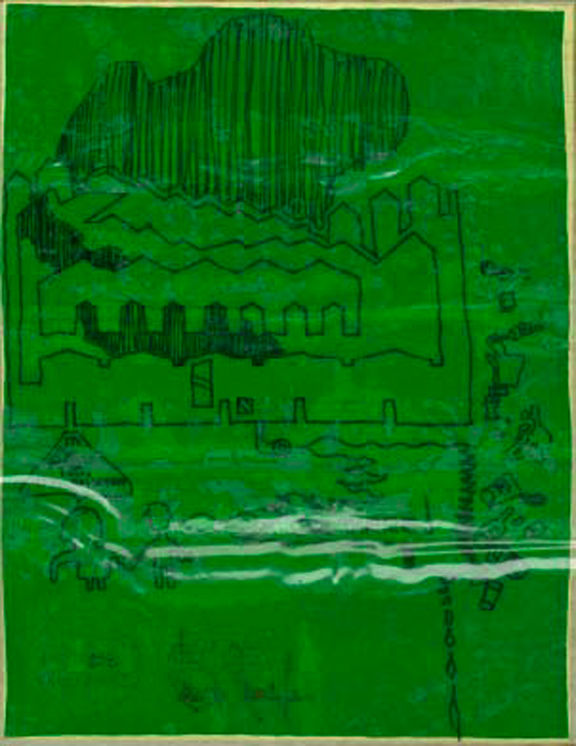 |
<32> In Italy, I enjoyed eating spaghetti every day while enjoying the plazas and campaniles of so many cities and villages including a cafe rendezvous with an American female stranger in Verona. In these circumstances, I pictured people like the character played by Deborah Kerr in the 1957 David Lean movie with Cary Grant called An Affair to Remember.
<33> In Paris, on the French Independence Day (Bastille Day) I drove and the open-top car ride down the Champs-Élysées while we shot guns into the air. My first visit to the Mont Martre and the Moulin Rouge in Paris led me down all its mysterious and tantalizing streets until I met a high school buddy, Frank Bozzo, in Paris, and together we visited Fontainebleau, Versailles, and the Blois Valley palaces.
<34> My sketches of the Eiffel Tower in Paris and San Marco in Venice looked like the commercial picture postcards being sold around the world and expressing my love affair with cities.
<35> Like the actor, Gene Kelly in an "American in Paris," my urban passion combined with my romantic-mind as when I guided a young Danish girl though her own city of Copenhagen who finally told me that I knew her city better than the natives did.
<36> I also enjoyed professional ballroom dancers and lantern shows in Tivoli Gardens. And, in Milan, I had a backstage view of a performance at LaScalla, followed by a cup of coffee with Van Clyburn, in a café, in the nearby Galleria.
<37> Nothing was more urban than a chance meeting followed by a brief but platonic romance with a female student in Toledo. Packing a picnic lunch she took me up a small mountain overlooking her city for me to draw while she sang: "coo co ru co coo" and when I we reviewed my completed sketches when I noted their familiar appearance she coyly told me that was because we were sitting on the very spot where El Greco sat when he painted "Views of Toledo". I had many other spectacular experiences in Spain including a scalper selling bullfight tickets in Madrid and the one week I ran with the bulls in Pamplona during the festival of St. Fermin.
<38> On a ship to Holland, I met another like-minded world traveler, this time from Lapland with whom I went to East Germany; who assured me that if she were to marry me, her communist father world probably kill us both.
<39> In contrast, and on another ship, I met Dutch Henny d’Munch who zealously took me back to stay with her parents in the world’s windmill capital of Kinder Dyke. Since growing up in New Amsterdam, now New York, I always had a great affection for everything Dutch.
<40> It seems that as a traveling bachelor I was able to meet many lovely ladies including the daughter of a British couple in Vienna, who invited me to entertain their daughter since we all shared a pension in the outer ring. In our tours, the Englishman taught me a great deal about the Romans' settlement of this and many other European cities. I partially enjoyed seeing Vienna before it was later covered up, remodeled, and modernized.
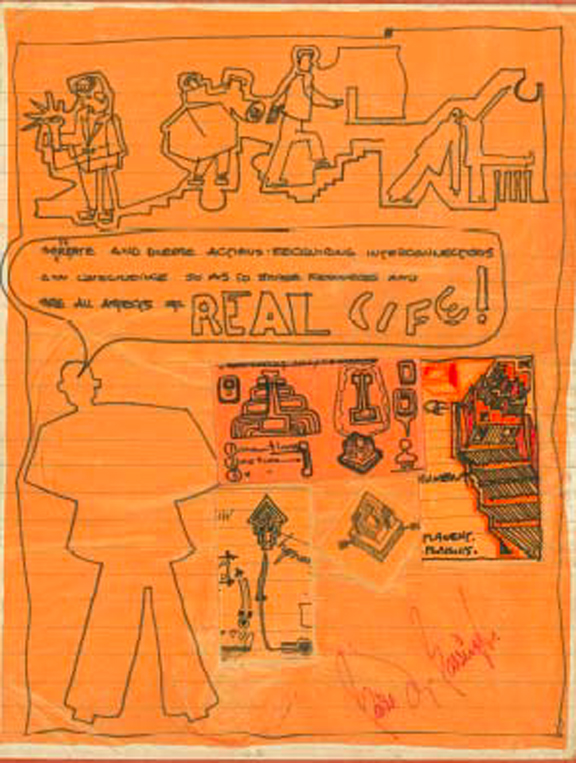 |
<41> Europe had its many special and peculiar customs, which first hit me when in Luxemburg, the first time I slept in a down bed and when I awoke, the next morning ate a whole apple pie for breakfast. In a bakery, I didn’t know what else to ask for so I just pointed. Of course, in every city I ever visited, I never could pass a church and I built my vocabulary of these buildings including noticing the details of fountains, statues, minarets, pediments, and buildings' decorative features.
<42> I particularly relished meeting and talking to old ladies, gentleman, and priests who could lovingly tell me of each detail of their neighborhood. Between these conversations and the ones on trains between one and another city, I learned the vocabulary of many languages. Horary for the famous "Euro Rail Pass", But nothing more defined my urban prowess than the time I left my sunglasses in a restaurant at the top on the village mountain of old Niece and then was able to meander back up, find the place, and get my glasses.
<43> This part of Niece was built on a mountain and had a myriad of side and winding streets, which crossed and intersected. But most of the Mediterranean cites streets skirted the hilly terrain even the spectacular Amalphi with its back walks, water falls and breathtaking views. It is here in the adjacent city of Positano that the German composer, Wagner wrote "the ring."
<44> In England, I Met Christine Keeler at the House of Lords and saw her fate being disputed, while makes a very detailed sketch of the House of Lords. In 1963, the Conservative Prime Minister, Harold Macmillan, suddenly resigned as an indirect result of the Profumo scandal involving Christine Keeler. Of course, England has other great cities where I had exciting adventures including Oxford, where I spent the night roaming the streets with Oscar Brown Junior after his outrageous performance of "Wam Bam, Thank You Mam." However, nothing beats the English breakfasts lavished upon me by the inn-keeper’s wife on the Themes in the heart of London. Like most big old cities, London has a large number of distinctly different neighborhoods resulting from waves of migration, development, and trade over a long period of time. At that time, I particularly enjoyed visiting Soho before it was made popular by the creation of the mini skirts and the Beatles. In London, I drew St. Paul Cathedral and every different town-house building type. I particularly enjoyed the elegant and stately townhouses facing elegant parks. You know the ones you see in Sherlock Holmes’ movies.
<45> On a train from Amsterdam, I teamed up with three Jewish boys, who as art students were going to Arles to discover the source of Van Gogh’s genius. They proudly showed me the numbers on their arms, which proclaimed their identity. After one week, they announced that the place had nothing infectious nor contagious that would have emanated to them or the great artist.
<46> This observation about this small and ancient city was a profound comment about the difference between urbanism, cities, and opportunities they afford the individual. Yet there are cites where great art movements have thrived.
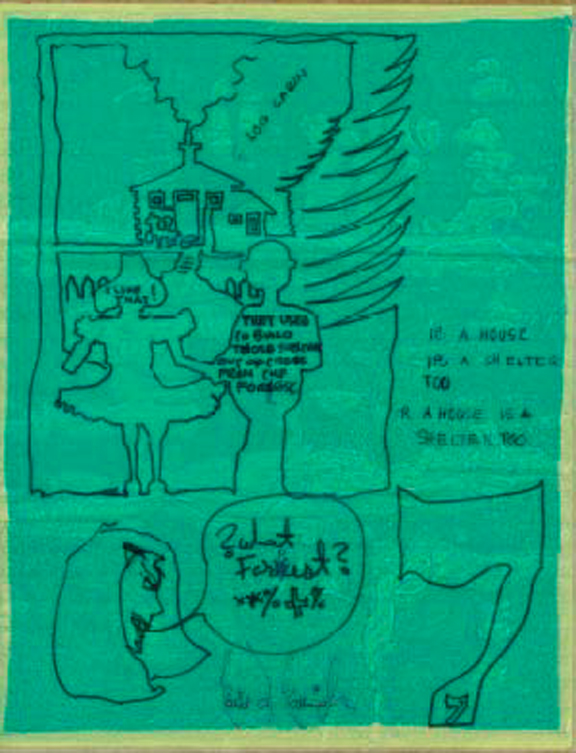 |
<47> In Hamburg, while traveling as a bachelor, I met a religious man and philosophized about our place in the world. I also saw women displayed in store windows on the notorious Raperbahn. Also, in Germany with my wife on New Years Eve in Berchdesgarten, a man’s wrist had been cut open by a bottle in which he had inserted and exploded a flare to add to the fire work festivities. The women accompanying him called me in and I immediately lifted his arm, told the women to call the Green Crescent, put a Tourniquet on his lower arm, sat him down and gave him lots of water to drink. The whole crowd were German tourist there for the holidays who had been many times to this place and because we were new and outsiders they had given us the silent treatment. Well, the next morning and every meal there after we were treated like honored guests and in the most loving way. Of course, the Green Crescent was very pleased and commended me on my correct treatment, and the man’s life and arm were saved. There was a little four year old girl with blond curls and blue eyes that they would send over to our table to greet and give us a lovely little kiss. She was so precious.
<48> Before and after I attended Columbia’s classes in behavior psychology and perception by Dr. Hefferline and Pratt’s, Ara Ignatius little about cities escaped my attention. So much so, that on one four month trip visiting seventy-two cities all I did was pen and drawings of most every thing I saw, I took no photographs. I thrived on perceiving and recalling the images, building a vocabulary of vignettes, fountains, statues, plazas, pavement, marbles, porcelain, gold leaf, embroidery, silks, stained glass, and columns.
<49> I saw the figure of Mercury attached to building’s corners in Leipzig, gargoyles on New York and Paris buildings, water gushing onto fountains on the sides of buildings and in the middle of backyard plazas in Italy, Spain, and practically every European city.
<50> I saw the spaces, shades, and shadows cast by the volumes. I drew the relationships between the buildings and the buildings that define plazas, campanile, walkways, and gutters.
<51> I cultivated this skill on both the streets of the city and the many long rides I made on the New York subway. I’d continuously sketch the people, car, and platform details.
<52> Especially impressive was the easy walk from the center of cities like Florence to its gardens in Fiesole. And, the easy walks in Capri and Ana Capri built by Mussolini filled with walks and benches with spectacular views, and the short trip from Vienna to Grinsing. In their way, they were similar to Rye, Palisades, Orchard Beach, Long Beach, Brighton, and Coney Island, where I noticed the architecture and colors of the mid-east.
<53> In every city all over Europe, there are the cafes; especially memorable are the open cafes in the Italian central plazas and the elegant cafés in Switzerland, Austria, and Germany. For example, Vienna’s Sacher and Zurich’s Springli for coffee, and, others to zip coffee while a man plays a zither. And, after the closing the inner ring to traffic at Vienna’s St. Stephan’s square we also enjoy imbis (snack shops); operettas; pensions, and small hotels including a night’s stay in our friends beautiful in-city villa and wine tasting in the evenings the in nearby Grinsing suburb. Vienna is a wonderful place to window-shop in any weather including the rain. One always goes by foot to shop for food, dine out, or perform some business. I always enjoyed hunting and discovering the personal and artistic place in any city I lived or visited.
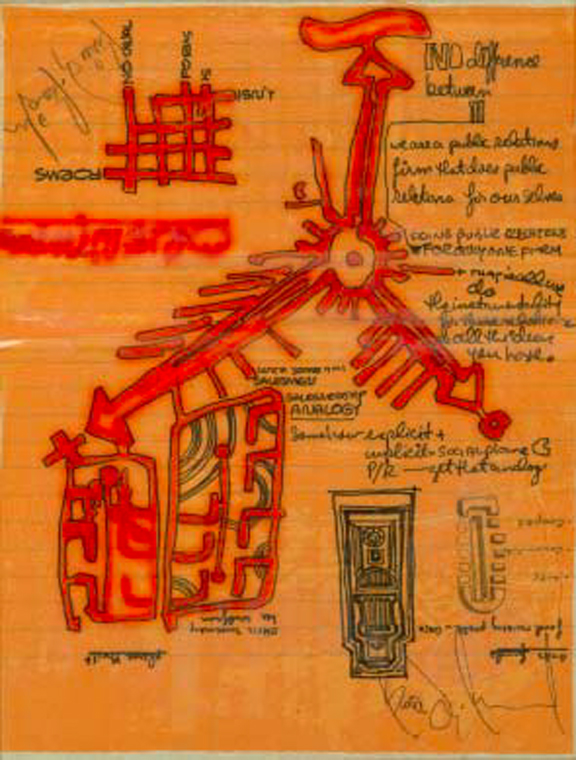 |
<54> Even in Manhattan, one block from my bachelor apartment I found a small Hungarian restaurant with burgundy velvet wall paper where a violinist serenades the tables. What a great place it was to bring some one special. But nothing was more spectacular than being entertained by a gypsy group of fifteen or so violinist in the city of Budapest.
<55> In many old cities, which thrived long before the auto, but had admitted vehicular traffic they decided to again accommodate the pedestrian and close their streets to automobile traffic.
<56> In Munich, we were able to see such an undertaking from the "underground up" when we visited Munich to make a report to the Mayor of the city of New York about the many things Germany was doing to improve its urban centers.
<57> One such visit was a complete inspection where I photographed the underground construction of the Munich subways and the world famous architect Frei Otto's Olympic Stadiums. We walked the tunnels and the newly constructed shells for the stations. The architects and engineers toured us through their offices and reviewed their plans to describe the details on how they were shoring up all the old existing building on the street level. Later we were to use the underground subway shopping malls when we lived in Kitsbuhel and made shopping trips to Munich. Ultimately, the entire central business district in side the old wall called Marian Platz and its connecting network of side streets was closed to traffic and became a pedestrian boulevard, wide and free for vendors, individuals and groups to meander and stroll. I recall a chill winters day when I stood under a cover of a shed serving "Grog" in a sub-freezing winter blizzard while my wife looked down upon me from the second floor optometrist office she was visiting. She could see the smoke being emitted out of the hut’s chimney filling the cold winter air while the fumes of heated cinnamon and rum filled my senses.
<58> The occasion of the Olympics gave the city of Munich the chance to build a complex public transportation system connecting the Olympic complex and all the city suburbs with this mass transit. We particularly enjoyed seeing the very modern design of the stadiums, dormitories and support building that comprised this Olympic Village. It was a good example of a quasi-government and private enterprise to synthesize a combined urban renovation, urban cluster, and mass transit system. The organization, agreements, and management of programming, contracting, and planning of all this was in itself a demonstration of Europe’s version of new urbanism, except this took place in about 1971.
<59> In Leipzig, I particularly enjoyed photographing the largest terminal railway station in Europe, Leipzig's “Hauptbahnhof”, Europe's largest. I admired the steel and glass long span beams and many rail tracks and trains. Likewise, the Budapest station and the many other stations I traveled. The Budapest station was particularly authentic and urban; it still had the turn of the century decorations and had not yet been cleaned and scrubbed from the last one hundred years of use.
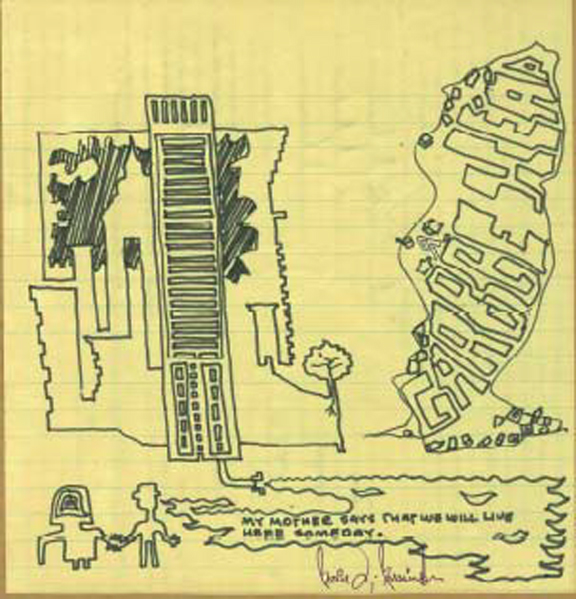 |
<60> Like Leo Tolstoy’s Anna Karenina 1940's movie version starring Greta Garbo, steam billowed from old locomotives as they came and went in the covered Paxton-like green house-like steel and glass enclosure.
<61> Urbanizing and urban acculturation is a matter of making connections when one city is linked to another; where one place conveys the memory to another. I call these transfers metaphors, as they not only link each other but "Space, Time, and Architecture": "The Growth of a New Tradition," the title of a great modern book written by Siegfried Giedion. Giedion was born in Prague in 1888, and died in Zurich in 1968, and was a Bohemia-born Swiss historian and critic of architecture.
<62> His ideas and books, "Space Time and Architecture," and "Mechanization Takes Command," had an important conceptual influence on the members of the “Independent Group at the Institute of Contemporary Arts” in the 1950's era. He has also taught at the Massachusetts Institute of Technology and Harvard University, where he became chairman of the graduate school of design. MIT's school of architecture was the first in the United States and the American Institute of Architects claims to have had something to do with its founding.
<63> When Alfred Roth hosted us at the University of Zurich, we were not only aware of Roth’s own architectural achievements, his world class Mondrian collection, but also the role of the school in furthering urban thinking. As the Bauhaus in Desseau, Germany housed the foundation of modern architecture, so did Zurich and Giedion for urbanism.
<64> In Zurich we enjoyed the Sprungli Café on bahn Hofstr for chocolate cake and coffee. We often slept in an inner city hotel and on a street with great sausages sold on an open cart, Christina likened this city to the way she remembers Leipzig before the war because of its size, design of buildings, commercial development, and scale.
<65> At the airport, you can both board the train to Kitsbuhel, or take the shuttle into town, the Zurich airport is a terminal for both its inter-city railroad and inner city shuttle trains. It was so convenient to fly from Khobar to Zurich and spend a few days before taking six hour mini- “cho-cho” train rides to Kitzbuhel. The Airport has a shuttle, which takes you to the inner city in a jiffy.
<66> The multi-level terminal also has lockers and showers and I often left our bags at the station, and with a small overnight bag walked across the bridge over Lake Zurich seeing many white swans as I made my way to our special little hotel.
<67> Because musical culture celebrates urbanity, I enjoyed the small cameo opera theatres in Italy’s villages such as Lucca and Sienna where I saw performances played in the same costumes and same theatres as when composers such as Puccini first played their musical stories about the pomp, pageantry, and vulgarity of cities and the people that rule. Such theaters were intimate, smelly, and seated less than 150 people. Often the audience would sing or hum along with the players and converse with the players as they recited or sang their well known lines. It was the predictability, familiarity, and social aspects of the gathering that the audience came to see. Each of the players was well known, as were the members of the crowd that gathered. Once again, it was like a café, plaza, or boulevard where one came to "see" and "be seen".
<68> I had no less joy for the Franz Lehar operettas in Vienna. These quality events hearken me back to the breathtaking performances I enjoyed at New York’s "Radio City" especially Ravel’s Bolero and the Nutcracker preformed at the "City Center" during Christmas. My childhood in New York was filled with stage shows and big screen movies at the Rialto, Strand, and Paramount theatres.
<69> These were inevitably coupled with spending pennies in the penny arcades on forty second street, which were filled with Ripley’s believe-it-or-not , pin-ball, shooting, and fortune teller scoping machines. On Faile Street, my favorite was the peep show card flick for a penny, which stood in front of the corner candy store and ice cream parlor.
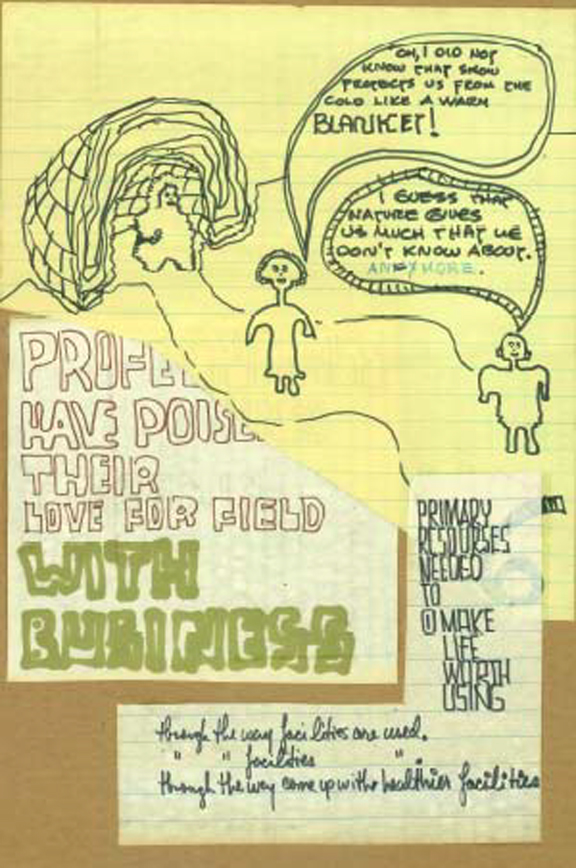 |
<70> As for recreation, in Amsterdam, I savored the hundreds of doors, door hardware and steps, which articulated one from another building and the 700 plus parks designed and built between 1947 and 1986 by architect Aldo van Eyck. The parks and the way they integrate into the neighborhoods of the cities surroundings well befits the superb canal area downtown. As I had in the yard of the little Italian general store across from Drake’s Park in the Bronx, I enjoyed playing with the goats on one of the canal bridges.
<71> My urban passion was able to make metaphoric connections between perceptions to make the strange seem familiar. Not only details, but also whole plans would mentally transfer and enhance my urban understandings. It is no wonder that I was fascinated with the very essence and application of the metaphor. Like urbanism, the metaphor was universal, synaptic, and instrumental to my maturity.
<72> In the Philippines, we would visit the hotels in the evening, including the gargantuan and opulent Shangri-La hotel. Adjacent to the lobby was a very large lounge where musicians would play while the most well dressed beautiful young ladies served drinks and refreshments. In the evening a marvelous elder gentlemen in a very well designed suit would sit and chat with visitors like myself who would find him conversing with the waitresses. He would play a remote control hand held electronic musical organ, which electronically signaled the house speakers. He was the anchor of the room giving it, its style and panache, like the old men I had talked to on Los Ramblas in Barcelona, I too asked him why he was doing all this and he said it is "his life." That’s urban!
<73> In South Africa’s Johannesburg called Jo'burg I visited SOWETO (South Western Townships) and the homes of Nelson Mandela and Desmond Tutu. Mandela’s was filled with books containing thousands of letters from universities throughout the world awarding him honorary doctorates and commendations.
<74> In SOWETO, I visited a lady in a restaurant and the homes of several people in the villages, such visits were reminiscent of my visits to the gravity built shacks in Puerto Rico’s La Pearla.
<75> My Saudi Arabia colleague and I ate well at various restaurants in Sandton’s Montecasino district and resided at the Intercontinental Hotel. This was another synthetic urban cluster built away from the dangerous big city of Jo’burg. A female Africana agent was our guest at a Greek restaurant in Marks Plaza where they played Greek, and Arabic music while we ate and broke plates. Breaking plates while dancing to Greek music was a custom my grandmother never taught me.
<76> The name Sandton comes from the combination of two suburbs, Sandown and Bryanston, both of which were places in the United Kingdom. It had its own modern and trendy character. All the buildings were new and well away from the poverty of the rest of the country. Most had well announced security systems of each building. Theft was rampant and one day we came upon an exhibit in the shopping center connected to our hotel containing an exhibit of our of two gated and guarded communities into which white south Africans were buying shares.
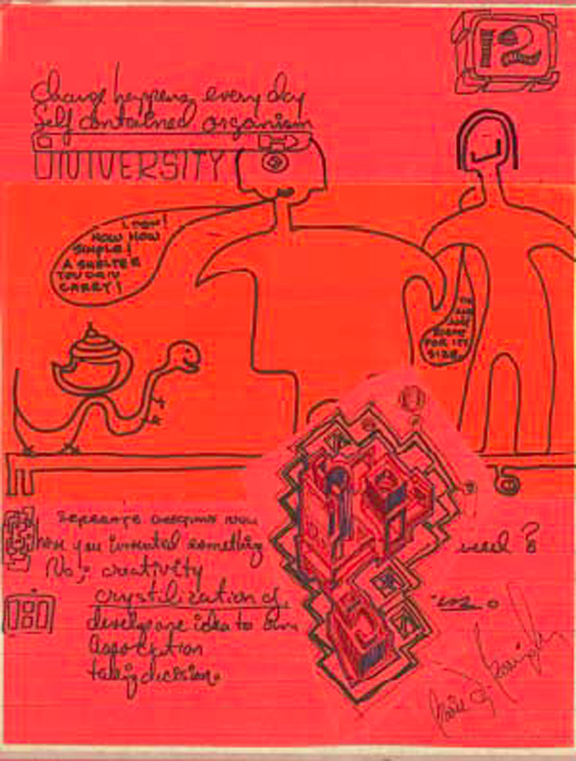 |
<77> Rustenburg was in the heart of Cape Town’s "wine country" and the headquarters for The South African Christian Church with a university and College campus integrated into the fabric of the city. It was another rather bland city surrounded by the agriculture of wine growers. The area had the most amounts of tundra species on the planet, many baby seals and chimps on the road. A line of many connecting hillside white stucco urban villages spectacularly frames Cape Town’s Pacific Ocean shores where one is more beautiful than some other. They themselves, like many Mediterranean fishing villages, are themselves urban clusters.
<78> Ambulating is the essence of the urban experience where ones own bodily motion controls the pace and direction as well as the selection of the surrounding sights and sounds.
<79> I thought of my body as the carriage of a television station’s camera and I the camera man. Less technically, I was formally introduced to the concept of "ambulating" in Spain where "Ambulatoria" is a custom people perform at night before dinner following the after noon rest or work. It is what we did on in the Bronx Southern Boulevard and similar to Fifth Avenue "window shopping." Except in Spain and other European cities you don’t shop you walk, talk and look at each, say hello, nod, and wink, perhaps flirt, or perhaps gossip. Ambulating in this way is not walking to get some where or necessarily see things. I regard ambulating as a crossover behavior connecting rural and urban populations.
<80> Arabs and Orientals ambulate in souks and shopping streets while Europeans ambulate in Plazas and commercial boulevards and Americans on shopping streets and now Malls (an invention of Austrian Architect: Victor Gruen).
<81> It is however, what I have done in hundreds of Cities I have visited, and what Baedeker calls “walking tours”: where you purposefully plan or randomly walk the streets seeing, finding and discovering building, details, statues, stairs, alleys, doors, gateways, fountains, etc., yes, the features of buildings. And, the features of streets, the pavement, cobble stones, tiles, patterns, street furniture, benches, carvings in stones, walls, monuments, facades of buildings lanterns, and light posts. Indeed, such walking and ambulating has been my life’s recreation and access to experiencing the "art form" of my choice: architecture. Interior design has to be seen inside of the buildings and in all my walks; I’d try to enter wherever I could. Like music, theatre, ballet, and writing, ambulating is also an art and a way of experiencing the world’s built arts.
<82> For example, the sidewalks of New York are made up of cement insitu-formed from naturally deformed quartzofeldspathic rocks, such as the highest finite strain as a mylonite, in which quartz is completely recrystallized or present as ribbon-grains forming continuous and almost planar layers over large distances; which is not unlike today’s fiberglass reinforced concrete. The sidewalks are therefore strong and even, they glitter and gleam, if you wear taps on your shoes, you can hear them click as you walk.
<83> Ambulating has allowed me to walk the streets and get lost in cities. I know... I’d loose my self in the streets and find my way back to reality by somehow seeing a landmark or following the grid. I‘d enjoy seeing the lights, window displays, street people, facades, etc. I’d especially enjoy winding up someplace strange. Before I was married, occasionally, I’d meet some one like the time I followed and met a lovely model. In Manhattan, I’d walk in the rain and snow, day and night. I’d some times find a bar and have my maximum of one drink or after a party; I’d walk and feel the combined rush of the alcohol, cold night air, and the glitter and gleam of the city. On such occasions, I’d particularly relish the design and width of the familiar sidewalks.
<84> Taking advantage of the multiple paths afforded by the Manhattan street grid. I’d walk to and from work, to my garage, shopping in different ways on one combination of contiguous streets then by turning a corner another street and then yet another.
<85> The grid made such walks exciting and adventurous. On the weekends, I’d bus to the "Y" and later the Yale club. On a Saturday afternoon, I’d go to a movie and walk Broadway. I particularly found it thrilling to walk the dangerous streets of 42 Street between sixth and eighth Avenues where 25 years earlier my little brother, friends and I would go to the "laugh" theatres to see the Marx Brothers, Abbot and Costello, Three Stooges, Eddie Cantor, Al Jolson and Laurel, and Hardy. Now these streets were lined with dope peddlers and prostitutes. The police are right there watching and monitoring the activities and limiting there arrests by the availability of courts and jails. In Saudi Arabia, I’d often calm my fellow westerners and Midwestern Americans that we see more crime in one day than Saudi sees in year.
<86> I’d ambulate in Europe, using maps, classified ads I’d perambulate the cities streets, seeing its landmarks, rivers, bridges, public transportation, restaurants, CBD, residential and private zones and then in the evening investigate the other side of the cities night and cosmopolitan life. Within a short while, even local residents did not know their city as well as I did. I’d look for the local candy store, grocer and music shop. Yes, using my childhood street-models I try to find the cultural anchors in the neighborhoods I visited. I understood and enjoyed the hierarchies of building neighborhood, section, borough, city, and country.
<87> I could see the metroplex and understand the inner connections of people to their artifacts, modes of transportation, and resources. It was always as lovely to me as a symphony and an especial work of art, the city is a work of art and to me shall always be one of mankind’s finest achievements. I had this point of view partly because I walked in immunity to the potential and unknown dangers around me as my urban thick-skin had made such encounters part of the experience, Yes, I had fought and been beaten in enough urban alleys to be selective, so I was bold but wise….this is called “street savvy”. Knowing who to look in the eye, and who to avoid, and when. As I learned to overcome my childhood fears as a mature urbanist, I looked forward to the occasional dark and mysterious courtyards and alleys.
<88> In hilly and foggy San Francisco, we enjoyed the side streets staying at either the Fairmont or Mark Hopkins Hotels at the very top of Nob Hill. In the morning, I’d order breakfast delivered to my room onto a table in front of my window so I could view the city as the sun’s rays evaporated the dense fog.
<89> The same fog I experienced in Castine Maine where I’d walk amongst the rocks guided by a lonely lighthouse. As in the villages of Italy, France, and Spain, one is compelled to walk in search of views and vistas one street after another. I made it a habit to make a free hand sketch of the city plan of each city I visited with the help of my memory of my walks and a city map. I noted the streets I walked noting the streets pattern and curvatures graphically showing the grid, circles, plaza, landmarks and neighborhoods. These plans and my sketches filled my book of these cites.
<90> However, sensuous, romantic and artistic are the aesthetics of cities there is the more mature and technical side, which is equally as thrilling. It was introduced to me by my father as he perennially reiterated the traffic flow and structure of New York City’s streets. Later when I’d visit any city, it was the first concept I‘d grasp to orient and direct my way.
<91> In Europe, I used Baedekers street guide and walking tours and when we settle or visit any American city the AAA map would give me the major North South and East West axial streets.
<92> Manhattan has a perfect compass grid while Houston’s I10 and Westheimer’s East west axial orients everything else. In the Bronx, I oriented myself on major boulevards, and avenues and according to the elevated and subway stops.
<93> Most spectacular was Amalphi, beginning at its rear base where the last street meets the looming mountain and the water falling into an open central basin carrying the water to feed the city. Every alley, street, window and door way leads to another open space and vista. The same can be said of Venice except with more opulence and surprise as one ambulates along and across canals and observes the distinct design of each bridge and building.
<94> Dubrovnik’s main street was to be my life-time model of the perfectly scaled commercial street because of the width of the street and the height of the enclosing building on either side. The people dressed in traditional garb would openly feast there eyes upon each other and I did the same. I had good practice in los Ramblas in Barcelona and on Southern Boulevard in the Bronx.
<95> By the time, I learned more about architecture at Yale, I had already visited, mapped, and written about many cities, so my perception was at its peak. I was eager to learn and develop my abilities to design not only interiors, furniture, and buildings; but also to design cultural centers, stadiums, airports, medical centers, commercial centers, and whole cities. By the time, I reached Yale I had worked in New York City professional design offices designing commercial interiors, the state University in Albany, Israel National Bank, James Talcott Factorers, High-rise apartments, and Hotel buildings.
<96> While at Yale, I not only worked part time for some of the leading architectural and engineering companies in the New Haven area, but also started my own design and drafting company in which I employed some of my fellow students as apprentices.
<97> Later years, in Mexico, I could not stop photographing the excellent views through one and another portico, small tunnels, and side streets that opens on to the town’s plazas and courtyards.
<98> As in Europe, many of the Mexican city’s courtyards are behind their streets and connected by a system of alleys and walkways that take you from one to another without going to the major streets and away from vehicular traffic. The excitement and enjoyment of discovering the difference of each inner city is furthered by meandering on straight side streets to major avenues and boulevards. Whether through alleys, tunnels, or gateways each vista and turn leads to something interesting, informative, and wonderful. Wonders which sometime are mysterious and other times informative but very often works of art and craft.
<99> The intercity relationship we enjoyed between Washington to Reston was similar to between Munich and Kitsbuhel; when Munich was our big city to shop and have an urban experience. It was as necessary as when we lived in Puerto Rico we just had to relive our "island syndrome" by a short weekend trip to the big apple.
<100> On the other hand, when I visited Washington, D.C. from New York City, I regarded D.C. as a small but formidable town. However, when we lived in RESTON, Virginia it was the converse. My final impression of DC was when I came for a one week conference from Saudi to be a guest at the Willard hotel and was driven to and from the airport in a black Lincoln limousine and I spent some the evenings with my Saudi colleagues showing them the streets and buildings in Georgetown.
<101> Years earlier when I was a child on one visit to Washington, I stayed in a small hotel with my family. The tree lined streets were dimly lit by street lights which cast wonderful leafy shadows across the pavement which when ever I left my building in Saudi Arabia’s Al-Khobar the street light above would similarly shine its light through the trees and cast a shadow on the sidewalk, just like the one I recalled from my childhood with my father in Washington.
<102> During our twenty years in Saudi Arabia, I drove on streets devoid of pedestrian traffic as though I was in a suburb, while being in the middle of a big city. Pedestrians could be found in Malls and suks but not ambulating on the streets. I recall being in the city of Bari in Italy and noticing the same thing. I also noticed this in East Berlin before the wall fell. Most people go to and from their destinations by car and the few who travel by foot do not linger. They usually were restricted by a combination of harsh governments and anti-social cultures, which discourage public exchanges and intercourse.
<103> In contrast, I can recall how I felt in Dubrovnik in 1963 when I'd walk down the streets, the men and women who filled the streets looked me over up and down and sideways. Women looked you in the eye, smiled, and welcomed me. The street language was open, communal, and very friendly. I only mention this to note the difference in Saudi Arabia; I am not the first person to notice this difference.
<104> This difference both defines the essence of urbanity and its passion.
<105> As the child who woke before mornings light, who without shoes walked the empty streets, exploring the alleys, stairs, fire escapes, sewer's, manholes, back alleys, and streets I now continued my explorations to see, know, and understand the details of my surroundings.
<106> In America, I continue my love affair with the city to have a personal experience with my surrounding context while living through my urban passion.
Return to Top»
